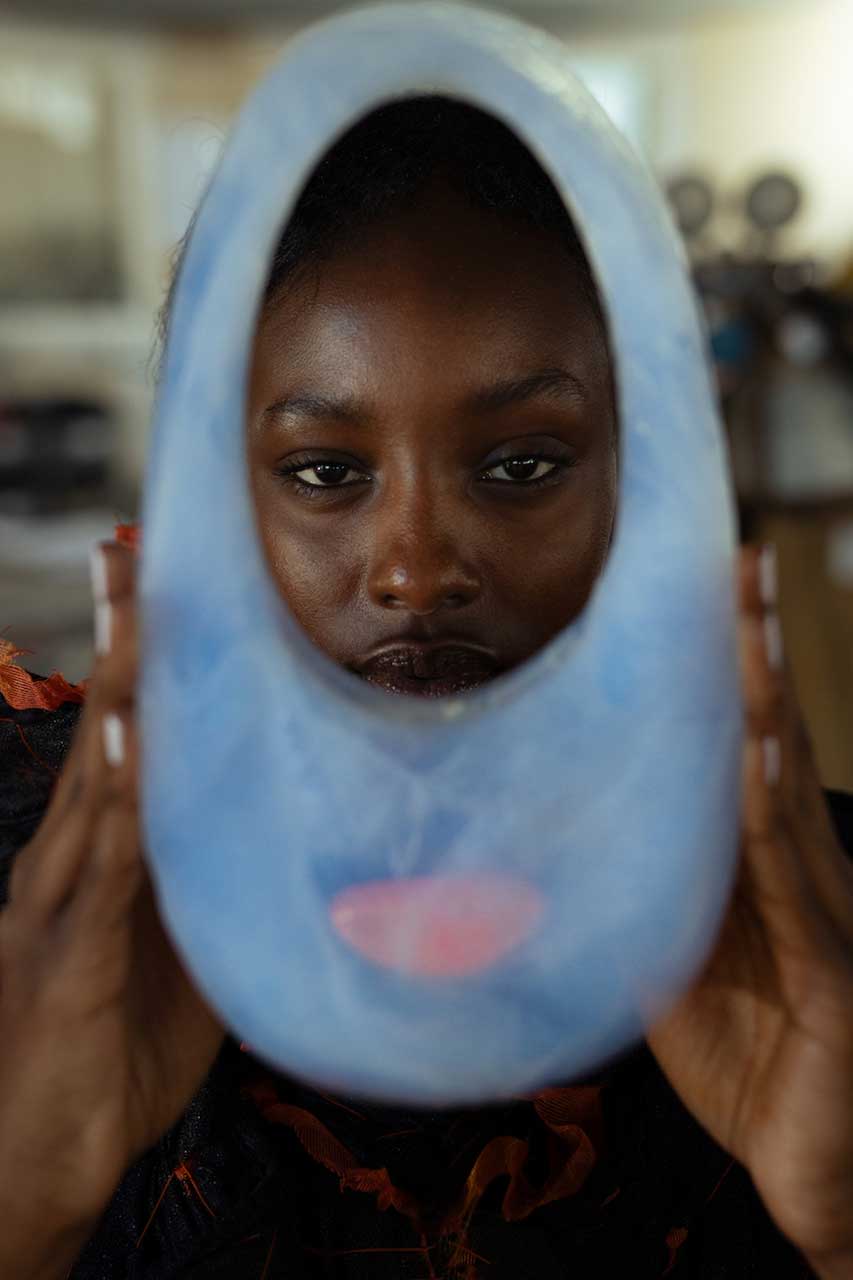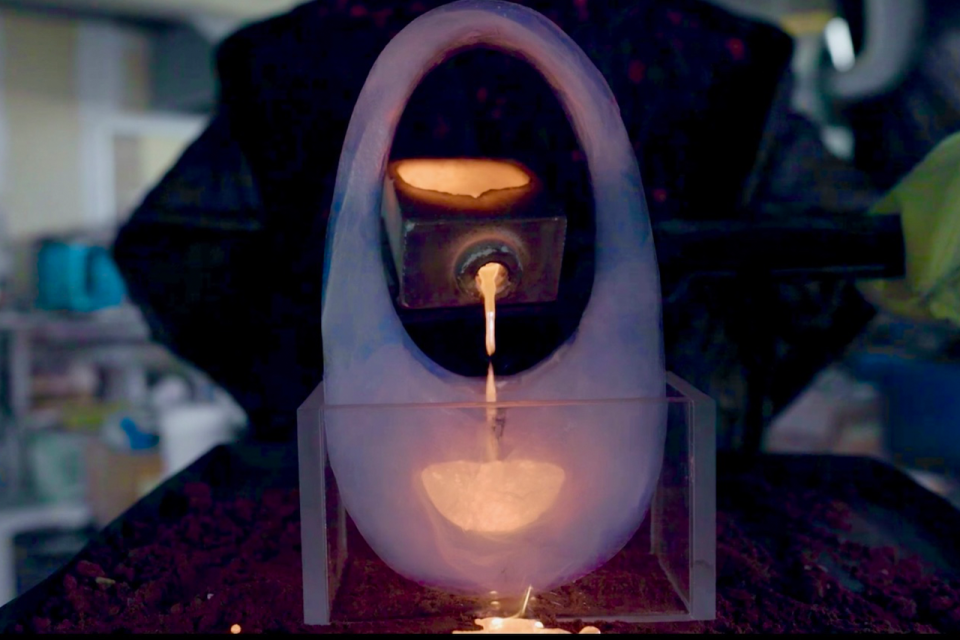Coperni's Air Swipe Bag Put to the Ultimate Heat Test
Earlier this March, during its Fall/Winter 2024 show, Coperni set the tone for fashion innovation with its Air Swipe Bag, made of 99% air and 1% glass. The cloudy appearance of the viral bag wowed the fashion world and sparked conversation about the future of fashion materials. Outside of the material, audiences questioned the bag's tongue-sized pocket and what it could potentially fit inside. Now, its creator, Professor Ioannis Michaloudis, is ready to spill the tea, or in this case, the melted brass.
Below we speak to Michaloudis on making the Coperni Air Swipe Bag, his recent experiment and how the design can help to drive the future of product development in an environmentally conscious way.
How did you first connect with Coperni to make the Air Swipe Bag?
Back in November, Coperni approached my collaborator from the United States with the brief. They knew they wanted the bag to be made with the NASA silica aerogel material and needed someone to take on the project. He immediately recommended me as I am the only researcher who has worked with the application of the NASA material in 3D before. Unlike most scientists who work with aerogel in flat planes, I can shape it into complex forms, even sculpting something as intricate as goddess Aphrodite's head.
What is special about this material?
NASA's silica aerogel was mostly used by scientists to catch stardust. It is the lightest solid in the world and can withstand extreme heat and pressure; it can even stop a bullet. This means that it is an excellent thermal insulator, being able to endure temperatures up to 1200 degrees Celsius.
How did you make the bag?
Firstly, I needed to shape the mould. So, Coperni sent me their classic Swipe Bag in black leather as an example and a file with all the relevant measurements of how they wanted it to look. I have worked with this material since 2002, so I knew that the dimensions the brand had proposed at the time would not allow for the aerogel to solidify properly. They wanted the bag to be wider than six centimetres but the only way that would work was by having a gap in the middle. Hence, I proposed to Coperni's creative director, Sébastien Meyer, that we add a slim inside pocket of 10 millimetres thickness. That pocket was also what sparked controversy around the bag.

What led you to experiment with the bag again?
As people started questioning what could actually fit in the pocket, whether that would be lipstick or car keys, I wanted to prove the unthinkable. So, I developed the proposal of pouring molten brass of 930 degrees Celsius into that pocket to experiment if it can hold it. I chose molten brass because it can burn through anything, your body, your hand, everything. Also, this made sense conceptually since the bag is practically air, how amazing would it be if it was surrounded by something that resembled volcanic lava?
Where did you present the experiment?
I presented my idea, "the energy of tomorrow is saving energy," at the Energy Innovation Summit of Advanced Research Projects Agency–Energy (ARPA-e) in Dallas, Texas. I aimed to prove that the bag's thermal insulation properties could save significant amounts of energy. This bag isn't just a fashion statement – it is the only bag capable of carrying molten brass due to the insulation powers of its material.
How did you conduct the experiment?
The experiment took place in a foundry in Athens, Greece. We took the Coperni Air Swipe Bag and poured molten brass that came straight out of a heated kiln. I chose that metal because it would come out as gold when solid which would look great with the look of the bag. We wanted a metal that is extremely hot in liquid form to truly test the bag's heat resistance. The production team, including myself, all took turns holding the bag with the molten metal coming out of the miniature pocket.
What was the result?
We managed to carry molten brass with our bare hands!

What is the biggest lesson to be gained from the experiment?
This experiment demonstrates that fashion can transcend aesthetics and become a significant energy saver. When fashion integrates interdisciplinary craftsmanship – science meeting design – it can inspire material applications that provide practical solutions. Experimenting with unconventional materials can lead to innovative ways to save our planet. So, fashion brands should be open to new ideas and merge with sectors such as science to fully explore the potentials of sustainable design.
What can fashion brands learn from this experiment?
They should consider that the bag I made for Coperni, which had people talking about it being unable to hold most items, is now proven to hold temperatures of more than 930 degrees Celsius. More designers should start considering the endless possibilities of all the products they create by, for example, consulting the knowledge of science. This way, we can find alternative materials to apply to everyday products to save energy, our planet and hence, our sky.
The sky acts as a protective garment for our planet. By mimicking this protection through materials such as NASA's silica aerogel, we can enhance sustainability by saving energy in everyday items, from shoe soles to textiles to skyscraper windows.
How can fashion drive the conversation forward?
This experiment can extend beyond fashion into everyday life. For example, insulating car windows with this material could eliminate the need for constant air conditioning, significantly reducing energy consumption and combating climate change.

